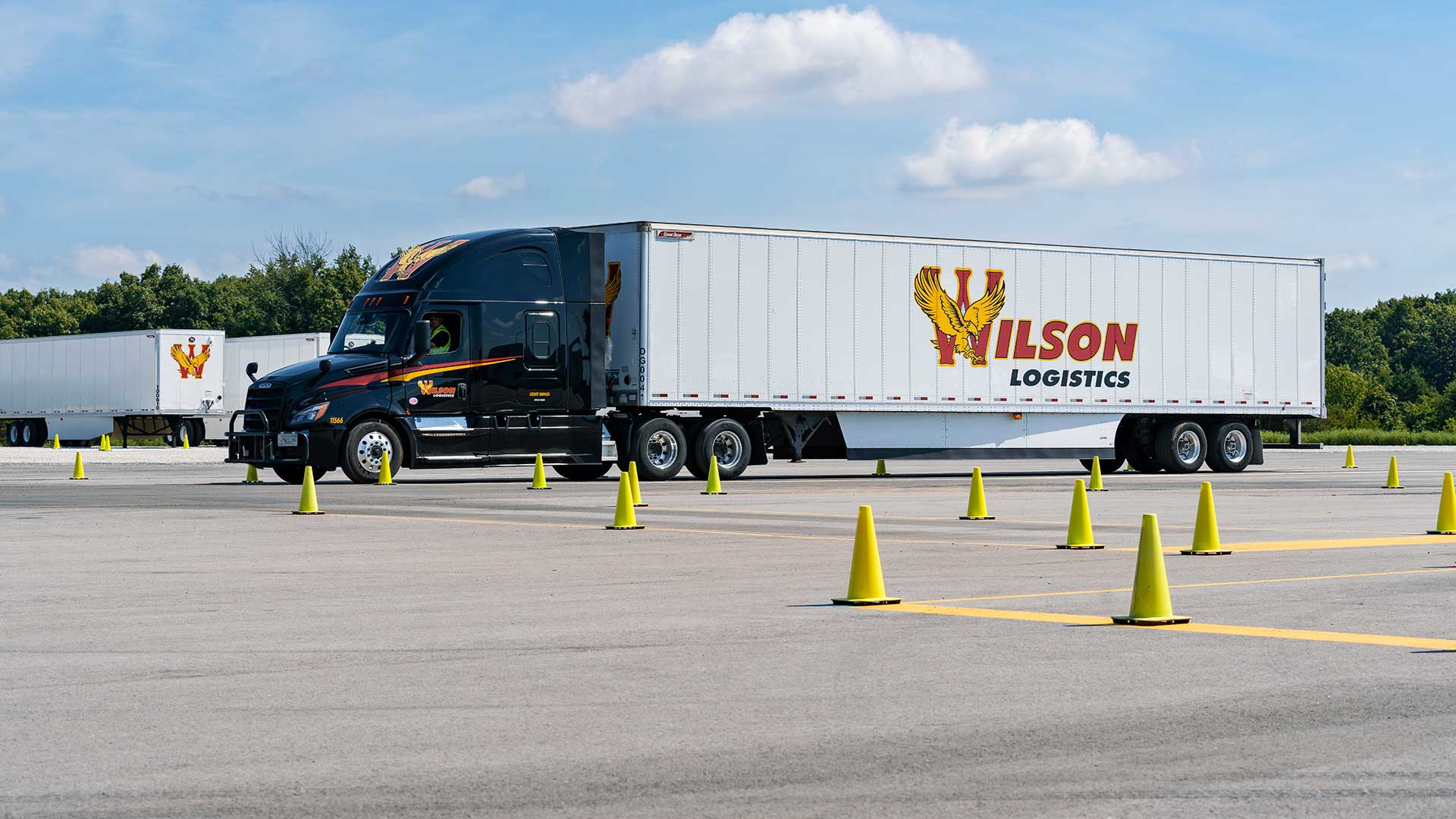Review Questions - Click On The Picture To Begin...

Should you pull a dolly out from under a trailer before you disconnect it from the trailer in front?
- No, the dolly should be removed after all trailers have been dropped to avoid damaging the trailer or dolly
- Yes, that way you can use the truck and first trailer to pull the dolly away from the rear trailer
- No, you should never leave the rear trailer without a dolly attached to it
- Removing the dolly before disconnecting is simply personal preference and it doesn't matter much either way
Quote From The CDL Manual:
Uncouple rear trailer:
- Park in a straight line on firm level ground.
- Apply parking brakes so rig will not move.
- Chock wheels of second trailer if it does not have spring brakes.
- Lower landing gear of second semitrailer enough to remove some weight from-dolly.
- Close air shut-offs at rear of first semitrailer (and on dolly if so equipped).
- Disconnect all dolly air and electric lines and secure them.
- Release dolly brakes.
- Release converter dolly fifth wheel latch.
- Slowly pull tractor, first semi-trailer and dolly forward to pull dolly out from under rear semi-trailer.
Next
Which of these steps about uncoupling the rear trailer is incorrect?
- Release dolly brakes
- Park in a "half circle" on firm level ground
- Release converter dolly fifth wheel latch.
- Close air shut-offs at rear of first semitrailer (and on dolly if so equipped)
Quote From The CDL Manual:
Uncouple rear trailer:
- Park in a straight line on firm level ground.
- Apply parking brakes so rig will not move.
- Chock wheels of second trailer if it does not have spring brakes.
- Lower landing gear of second semitrailer enough to remove some weight from dolly.
- Close air shut-offs at rear of first semitrailer (and on dolly if so equipped).
- Disconnect all dolly air and electric lines and secure them.
- Release dolly brakes.
- Release converter dolly fifth wheel latch.
- Slowly pull tractor, first semi-trailer and dolly forward to pull dolly out from under rear semi-trailer.
Prev
Next
Which of these steps for uncoupling the converter dolly is correct?
- Lock the pintle hook on first semitrailer
- Release converter gear spring brakes
- Disconnect safety chains
- Quickly pull clear of the dolly
Quote From The CDL Manual:
Uncouple converter dolly:
- Lower dolly landing gear
- Disconnect safety chains.
- Apply converter gear spring brakes or chock wheels.
- Release pintle hook on first semitrailer.
- Slowly pull clear of dolly.
Prev
Next
Should you unlock the pintle hook with the dolly still under the rear trailer?
- None of these answers are correct
- Yes, the pintle hook should always be unlocked while still under the rear trailer
- No, the dolly tow bar may fly up, possibly causing injury and making it very difficult to re-couple
- Unlocking the pintle while under the rear trailer is a matter of personal choice
Quote From The CDL Manual:
Caution: Never unlock the pintle hook with the dolly still under the rear trailer. The dolly tow bar may fly up, possibly causing injury and making it very difficult to re-couple.
Prev
Finish
Please select an option








 TT On Facebook
TT On Facebook